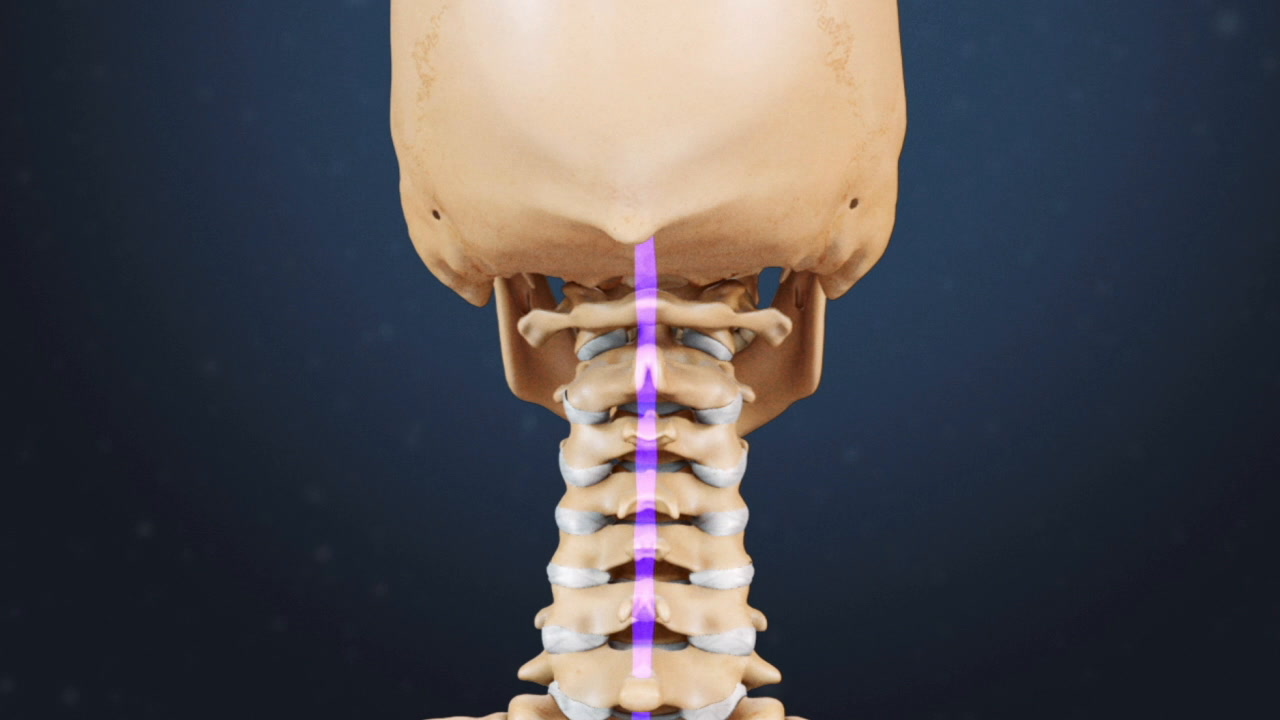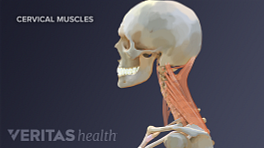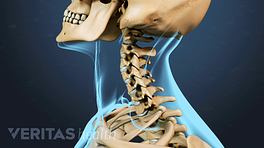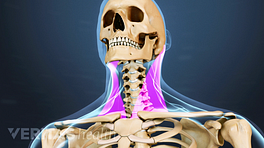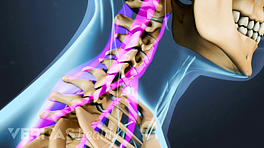The cervical spine is a remarkable construct of interconnected vertebrae, joints, muscles, ligaments and tendons – all of which work together to provide support while allowing a wide range of motion.
However, any of these anatomical structures can wear down or become injured, causing neck pain and possibly pain that radiates down the arm.
Acute neck pain usually involves a tear to a muscle or ligament in the neck.
The neck may become sore or stiff. If muscle spasm is involved, pain may be intense.
Neck pain that lasts or keeps coming back over a period of at least 3 months is considered chronic.
Common sources of chronic neck pain include the facet joints and intervertebral discs in the lower cervical spine.
The discs help provide spacing and cushioning between adjacent vertebral bones, while the facet joints allow limited movements and restrict range of motion.
A disc can become a source of pain if it degenerates, or if it herniates.
A facet joint can become a source of pain if its protective cartilage starts to wear down or the joint capsule gets a tear. As the joint degenerates, bone spurs grow to stabilize the joint, increasing inflammation and stiffness.
These degenerative changes to discs and facet joints in the cervical spine can cause a nerve root to become compressed which can result in cervical radiculopathy symptoms of pain, tingling, numbness, and/or weakness to radiate down the arm.
Similarly, degenerative changes to discs and facet joints can also cause the spinal cord to become compressed resulting in cervical myelopathy symptoms of severe shooting pains, weakness, and/or reduced coordination anywhere beneath the level of spinal cord compression.
